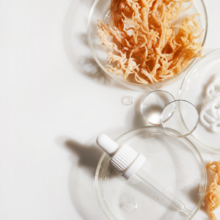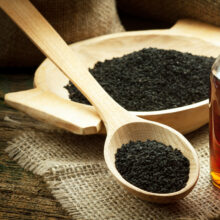What’s With Gluten Anyway?
- Published: Sunday, September 14th 2014
- in Nutrition
 The bread that was being baked over 10,000 years ago was nothing like that bread we have today. These days, wheat products have more gluten than in the past, resulting from hybridization. Hybridization is the combination of different varieties of the same organism which results in the creation of a new variety of that organism. This is a process that has occurred for hundreds of years and is why, for example, there so many different types of tomatoes including grape tomatoes, cherry tomatoes, beefsteak tomatoes – you get the picture. Hybridization offers protection against one crop failing and there is nothing dangerous or worrisome about this practice.
The bread that was being baked over 10,000 years ago was nothing like that bread we have today. These days, wheat products have more gluten than in the past, resulting from hybridization. Hybridization is the combination of different varieties of the same organism which results in the creation of a new variety of that organism. This is a process that has occurred for hundreds of years and is why, for example, there so many different types of tomatoes including grape tomatoes, cherry tomatoes, beefsteak tomatoes – you get the picture. Hybridization offers protection against one crop failing and there is nothing dangerous or worrisome about this practice.
Now friends, GMO, or genetic modification, is where the problem lies as this is a leading cause for food allergies and intolerances. Genetic modification occurs when genes from one species are inserted into another. For instance, the seeds from hazelnuts or fish are inserted into corn crops or a soybean plant. This often causes problems for people who are allergic to certain foods since genes can be hidden. Although there is not enough data to support a cause and effect relationship between GMO foods and poor health outcomes, such as gluten intolerance, I personally do not agree with this practice, most people don’t.
The problem in our country is not the gluten craze. The issue is that we eat too much food, consume too many empty calories, and we take in far too much fat in our country hence our deleterious state of health. Obesity and heart disease are much worse offenders to our health care system than GMO foods, although I don’t condone the practice.
The gluten answer is simple, there are a number of people who actually do need to be concerned about every bite of gluten and that is the 1 percent of people in the United States who have celiac disease. Those individuals need to be medically gluten-free and their physician can and should monitor their care. Then there are the 6 percent of people who have gluten intolerance and those are often individuals with diseases such as auto immune diseases and irritable bowel syndrome. Those folks need to watch their consumption of high gluten foods. I teach tele-classes on all this and you can find me at www.inspiredbywellness.com for more information.
While many people in our country eat too much gluten; lots of crackers, bread, pizza, and pasta there is no evidence that there’s an upper limit on gluten intake beyond which people start to develop health issues.
I’ll share my personal practice. I eat a whole food, plant based diet, and I have both brown rice pasta and whole grain pasta in my pantry. If I want to make it for dinner I do. I don’t eat gluten all day long but I do enjoy pasta from time to time and I have no digestive issues when I eat it. The more plant foods and the fewer animal products you consume will help to protect your digestive system and you’ll be able to digest gluten much easier. Now for the fun stuff…
Dr. Lana’s Low Fat, Dairy Free, Gluten Free Potato Salad
Peel and cut 6 – 8 potatoes in cubes and boil until they are tender with the poke of a fork.
Rinse in cold water after cooking and set aside.
In a separate bowl combine:
4 parts no fat hummus (I like the Sarah Cuisine brand of no fat hummus at Whole Foods or you can make your own by adding rinsed chick peas and a bit of lemon juice and sea salt in a blender until smooth.)
2 parts yellow mustard
1 part juice from dill pickle jar
Sea salt and cracked white pepper to taste
4 to 5 dill pickles chopped (I use the chilled dill sandwich slices and cut about 5 of them)
Mix this wet mixture well and add the cooked cubed potatoes.
Add more sea salt or dill pickle juice if necessary.
You can always double or triple if you’re having a big shebang!
Enjoy!



